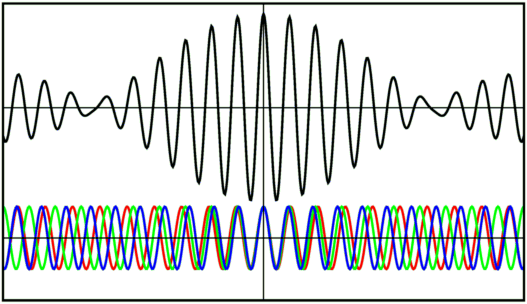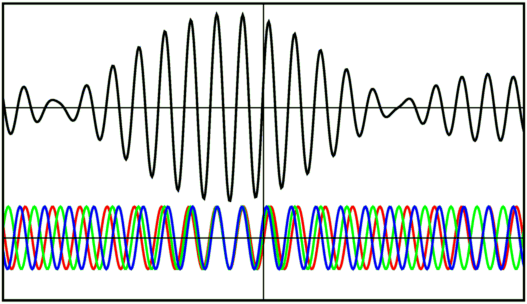Anomalous Dispersion, not Faster than Light
In the 20 July 2000 issue of Nature,
Wang,
Kuzmich & Dogariu talk about faster than light transmission.
However, this is really just anomalous dispersion, as the authors
readily admit.
A pulse of light can be decomposed into a sum of sine waves with different
wavelengths, as shown below.

The black curve shows the sum of the red, green and blue sine waves.
When all of the waves are delayed, but the longer wavelengths [red] are delayed
more and the shorter wavelengths [blue] are delayed less, then the overall
pulse appears to be advanced in time!

This is how the pulse in the Wang et al. (Nature, 20 Jul 2000)
experiment was advanced by
62 nanoseconds while passing through a gas cell only 6 cm long. Even
if the speed of transmission was infinite, that could only shave 0.2 ns
off the time. The actual advance was much larger, representing time travel
into the past, not faster than light travel.
But it was really only anomalous dispersion. Normal dispersion
in glass delays the blue light more than the red light, while in
anomalous dispersion the red light is delayed more than the blue.
As shown above, this causes the pulse peak to shift earlier in time.
Tutorial:
Part 1 |
Part 2 |
Part 3 |
Part 4
FAQ |
Age |
Distances |
Bibliography |
Relativity
© 2000 Edward L.
Wright. Last modified 20-Jul-2000


